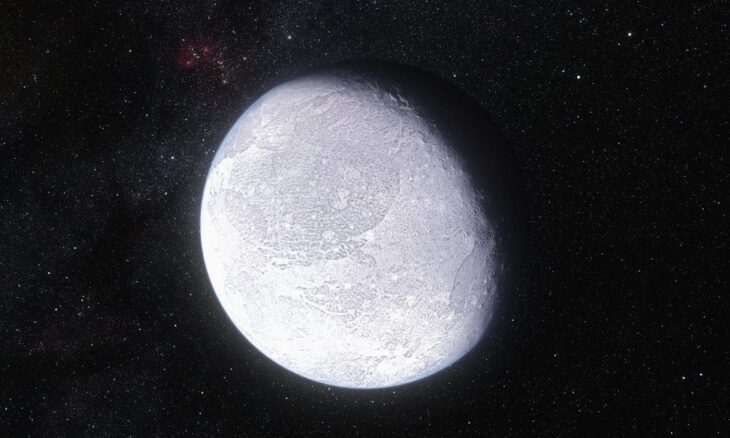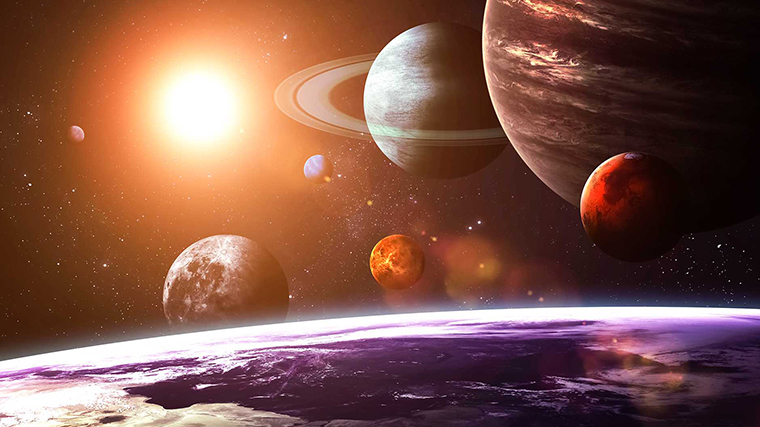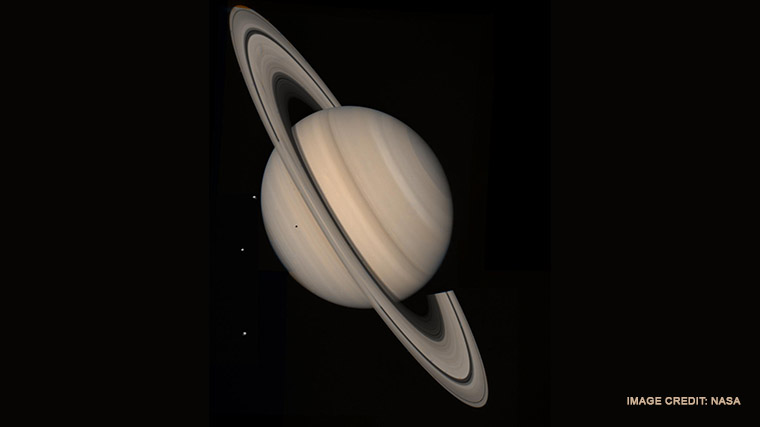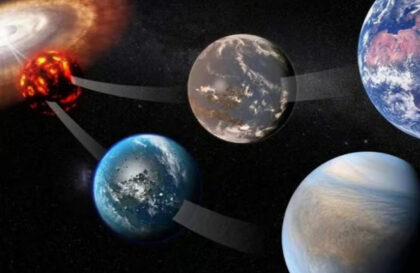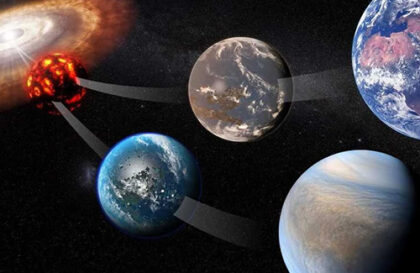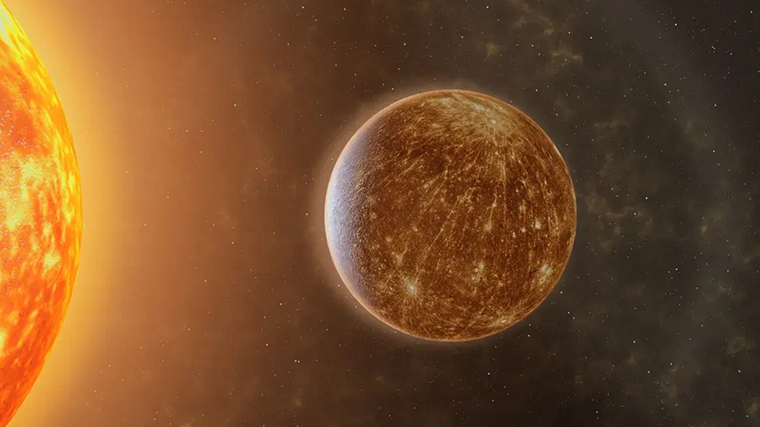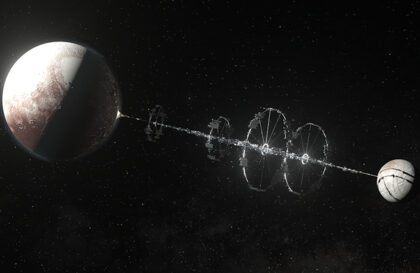Eris is the most distant dwarf planet discovered to date, located beyond the orbit of Neptune. It was discovered in 2005 by a team of astronomers led by Michael Brown and was initially considered a full-fledged planet, akin to Pluto. It was the similarity of Eris and Pluto that ultimately led to the “downgrading” of the latter in status, the clarification of the concept of “planet” and the introduction of the concept of a dwarf planet.
Name and discovery of the planet Eris
Eris, the second dwarf planet in the solar system, was previously considered larger than Pluto. It was discovered in 2003, but its official announcement occurred in 2005. It was originally called “Xena” due to its association with the number “10” (the tenth planet of the solar system) but was later renamed Eris, after the goddess of dispute and discord, due to debates about the status of Pluto and other similar objects that led to their classification as dwarf planets.
Sizes and distance to the dwarf planet Eris
Eris is a large trans-Neptunian dwarf planet. It formed in the Kuiper Belt during the early stages of the solar system’s evolution, about 4.5 billion years ago.
It is located several times further from the Sun than Neptune. The average distance is about 68 astronomical units. Eris is now approximately 95 AU from Earth. Light takes about 13 hours to reach Eris.
Its diameter is approximately 2,326 kilometers, which is approximately 1/5 the diameter of the Earth. Eris is slightly smaller than Pluto in size, but more massive and 27% denser. Thus, it is the tenth largest in the solar system, but the ninth in mass.
Gravity on Eris is the strongest among the dwarf planets. However, it will be 11 times smaller than on Earth – that is, your weight will decrease by 11 times on Eris!
The surface area of Eris is approximately equal to the area of Russia.
Eris moves along such a long, very elongated orbit. It will describe a full circle (or rather an ellipse) along it in 558 Earth years. An interesting feature of Eris’s orbit is not only its shape but also its inclination to the ecliptic plane, which is 44 degrees, that is, Eris rotates around the Sun “diagonally” relative to other planets.
Characteristics of the dwarf planet Eris
Eris has a high albedo (reflectivity) estimated at 0.96, which is comparable only to Enceladus, one of Saturn’s moons. This is probably due to the ice on its surface.
Given a density of 2.52 g/cm³, Eris is a rocky body and may have an internal ocean of liquid water between its mantle and core due to radioactive decay.
The surface temperature of Eris varies from -243.2 to -217.2°C depending on its position relative to the Sun. Even at such a distance from the Sun as Eris, moments of approaching perihelion give its surface a little warmth.
The spectra of the methane ice bands indicate a similar surface to Pluto and Triton, although Pluto and Triton have a reddish tint, Eris appears almost white. This indicates a cold environment where methane ice can remain intact.
Methane ice is highly volatile, so a hypothesis has emerged about internal sources of renewal of methane ice on Eris, and perhaps even this is due to the activity of living organisms on its surface.
Eris has no atmosphere. But when it comes closer to the Sun in about 200 years, the deposits of methane ice on its surface will thaw a little and Eris will find itself surrounded by a thin methane shell.
Dysnomia – satellite of Eris
Eris has one satellite discovered (discovered in 2005) and named Dysnomia in honor of the mythological goddess of lawlessness – the daughter of Eris. But in her “girlhood”, when Eris was still Xena, the satellite was called Gabrielle, in honor of the friend and comrade of the warrior princess from the series. After renaming Xena to Eris, they did not stand on ceremony with her smaller “friend”.
Dysnomia is the second largest satellite of the dwarf planet (after Charon, the satellite of Pluto). It is believed that it was formed after the collision of Eris with another celestial body and consists entirely of ice. Despite this, spectral analysis shows that it has a very dark surface, which contrasts sharply with the “brilliant” Eris.
Dysnomia has a diameter of approximately 700 km (+/- 100 km) and is located 37,000 km from Eris. Its orbit is almost circular, and it makes one revolution around its owner in 16 days.
Riddles of Eris
Mysterious processes are taking place on the surface. The data shows changes in nitrogen concentration with depth. In 2007, observations from a multi-mirror telescope suggested that nitrogen concentrations should increase with increasing depth, while measurements two years earlier from another telescope showed the opposite.
These changes could be explained if Eris was close to its perihelion (the point of its orbit closest to the Sun), where solar radiation could heat the surface and cause nitrogen to evaporate. However, Eris is currently located about 100 AU away from the Sun. e. or 15 billion km and such events are unlikely.
Another possible explanation is cryovolcanic processes, in which methane gas is released from the interior of the dwarf planet. This process is similar to observations by the Voyager 2 spacecraft on Neptune’s moon Triton, where cryovolcanoes are powered by tidal forces from the massive planet.
Exploration and expeditions to the planet Eris
Although Eris and its moon Dysnomia are of interest for research, leading space agencies have no plans to send robotic probes to this pair shortly. Calculations show that a probe like New Horizons could reach Eris in 24 years using a gravity assist maneuver at Jupiter. Perhaps in the future Eris will become the object of study as part of more extensive missions, especially within the Kuiper Belt. However, this will not happen in the coming decades.
Banner image: Artist’s impression shows the distant dwarf planet Eris, highlighting its bright surface,
ESO/L. Calçada and Nick Risinger
Image credit:
http://skysurvey.org
https://sciencesprings.wordpress.com
https://www.eso.org
https://en.wikipedia.org
https://www.nasa.gov
